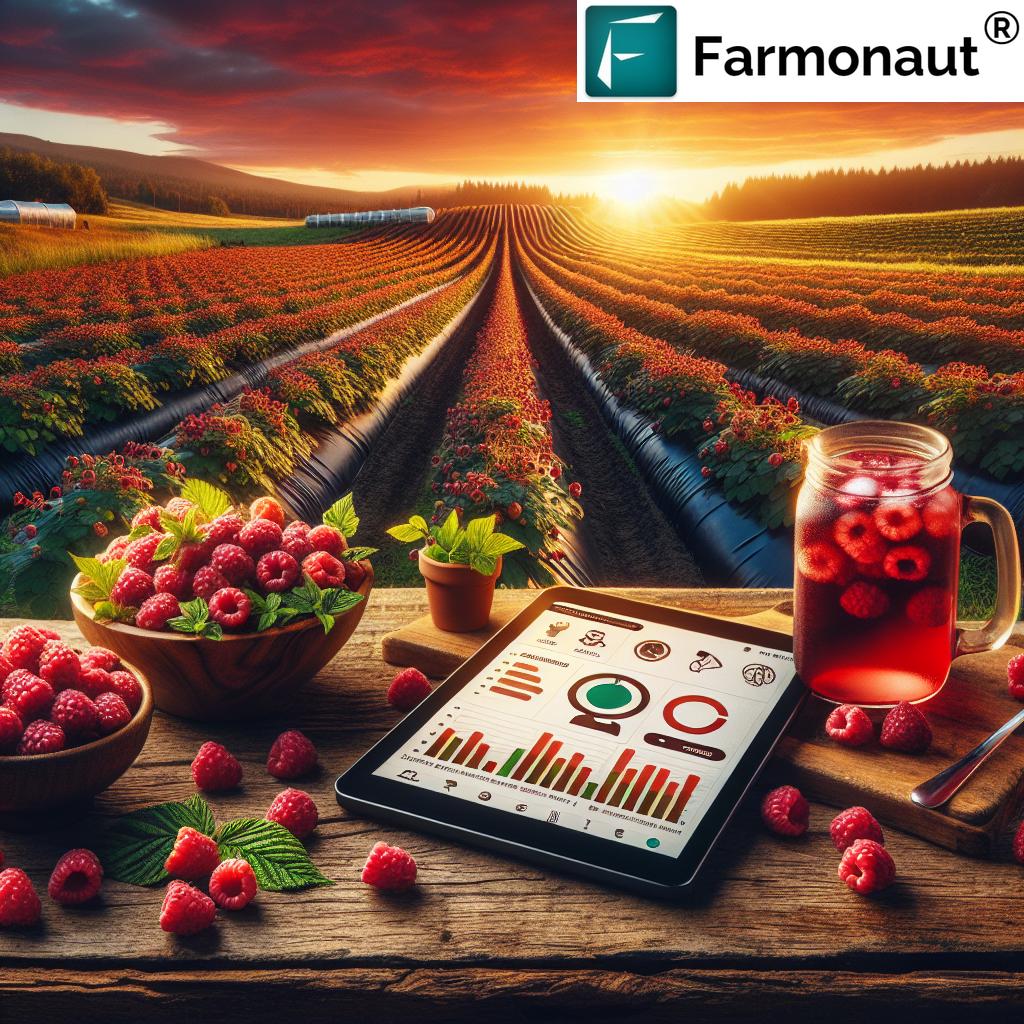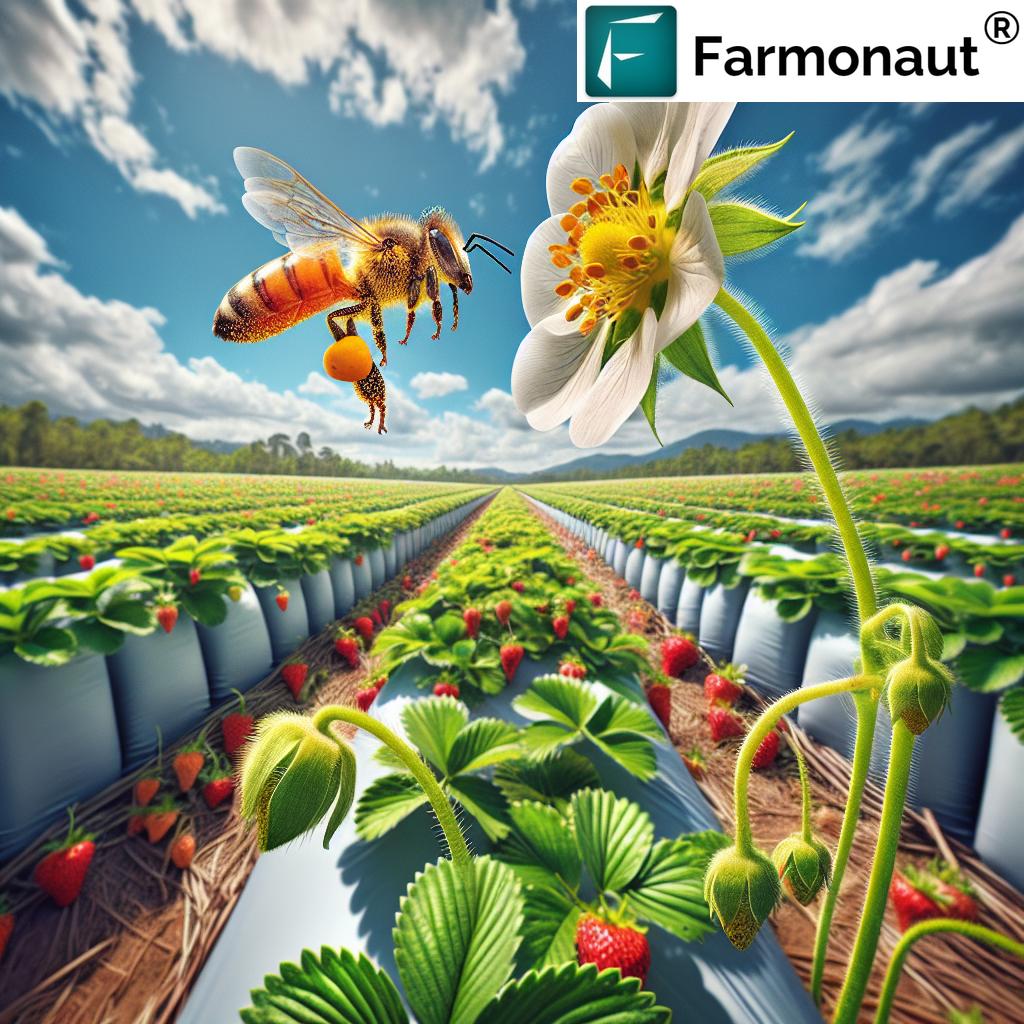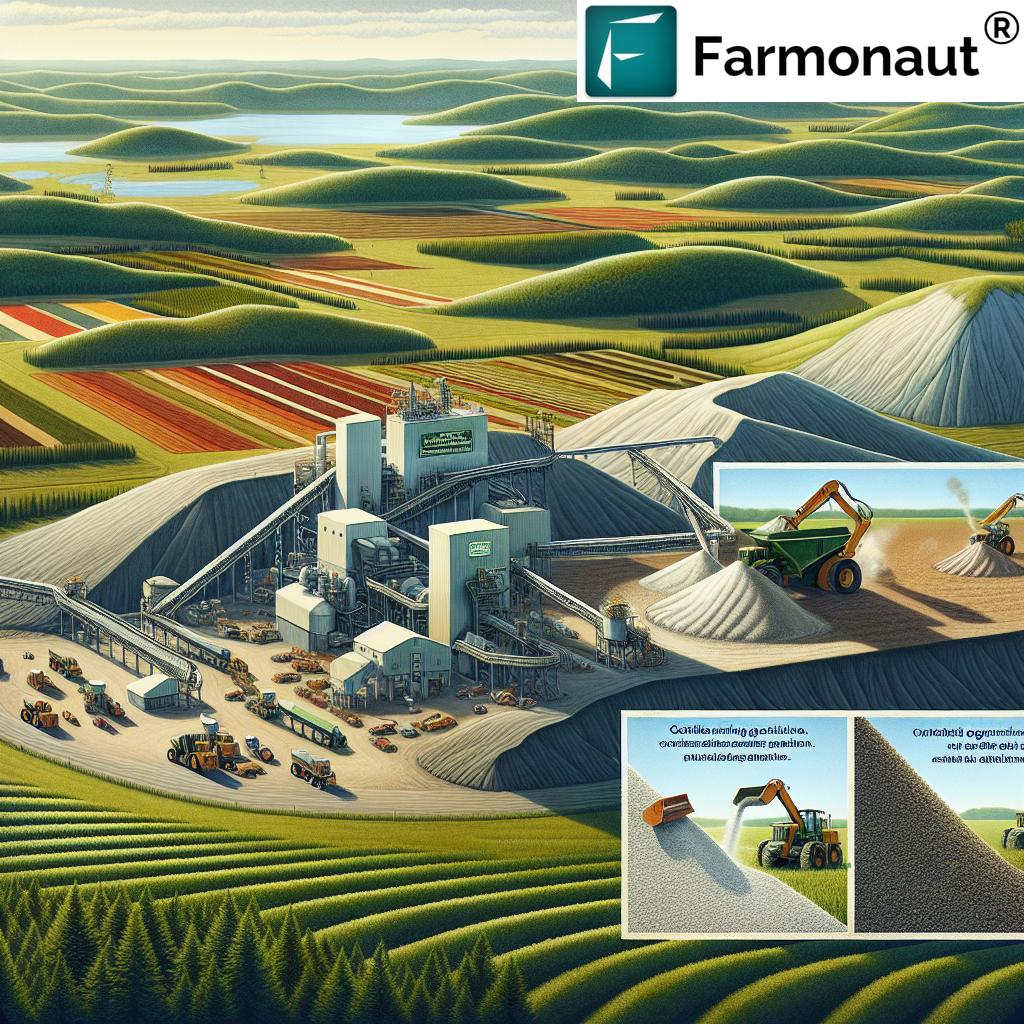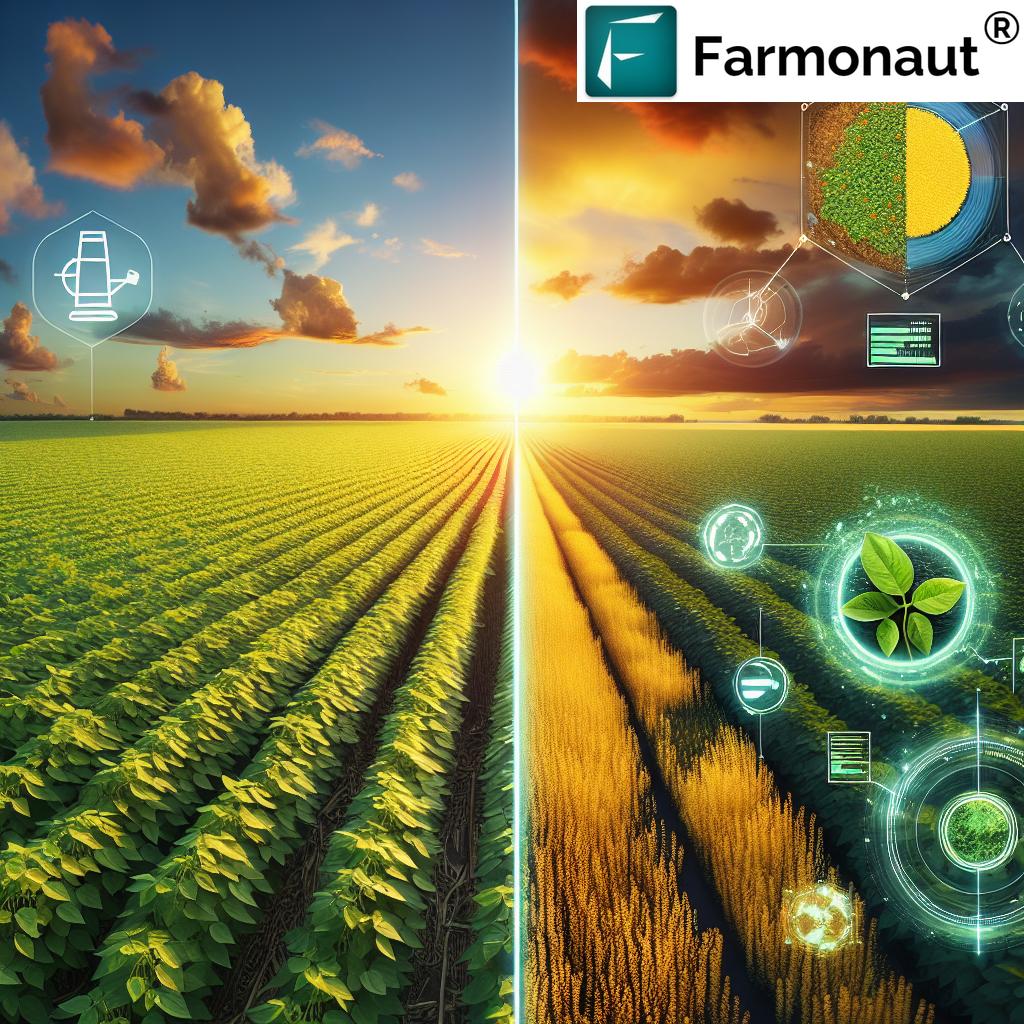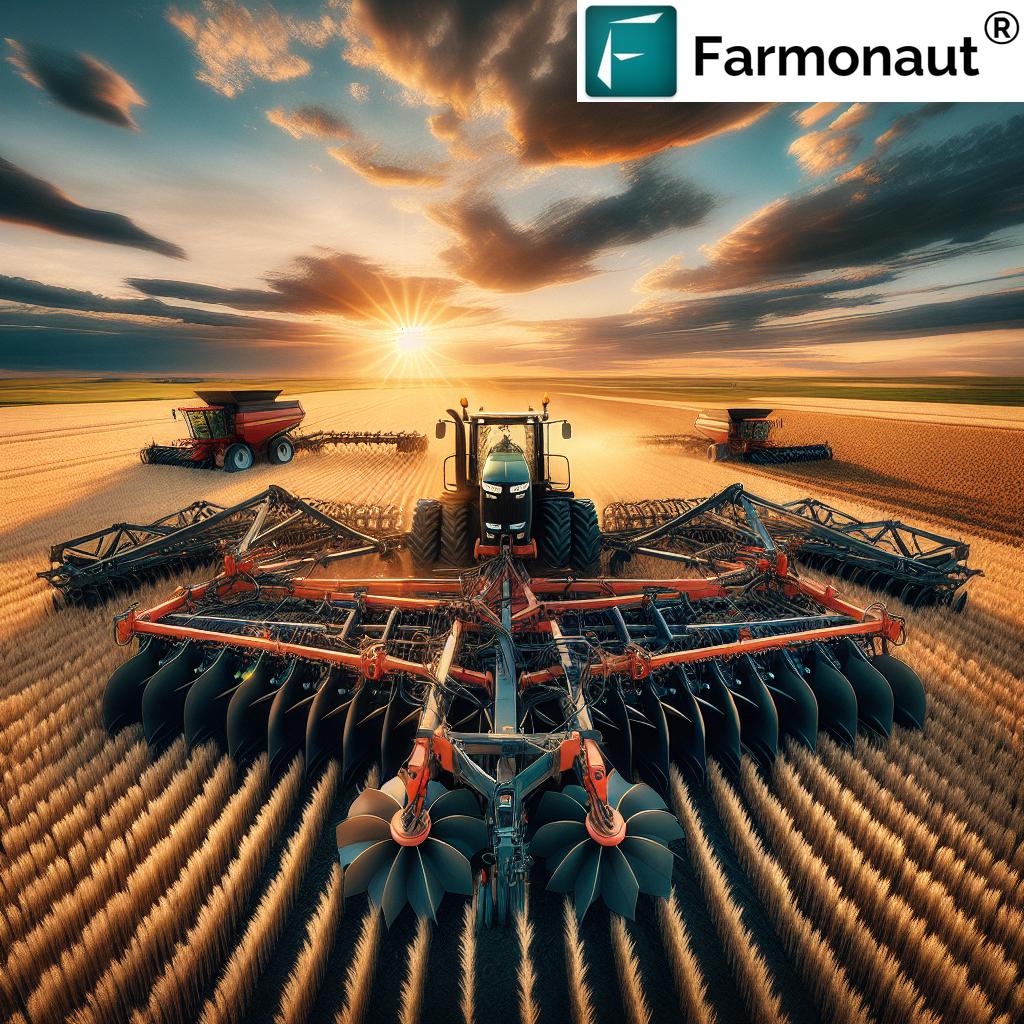Unleashing the Power of Rotational Grazing: Boosting Productivity and Carbon Storage in Alberta’s Grasslands
“Rotational grazing can increase grassland carbon storage by up to 30% compared to conventional grazing methods.”
“Alberta’s grasslands cover approximately 93,000 square kilometers, representing a significant potential for carbon sequestration through improved grazing practices.”

Welcome to our comprehensive exploration of rotational grazing and its transformative impact on sustainable livestock management and grassland carbon sequestration. In this blog post, we’ll delve into the world of advanced grazing systems and their crucial role in enhancing productivity while promoting environmental stewardship. As we embark on this journey, we’ll uncover the fascinating interplay between livestock management and ecosystem conservation, with a particular focus on Alberta’s vast grasslands.
At Farmonaut, we’re committed to leveraging cutting-edge agritech solutions to support sustainable farming practices. Our satellite-based farm management platform provides valuable insights for precision agriculture, enabling farmers to make data-driven decisions that optimize crop health and resource management. While our primary focus is on crop monitoring, we recognize the importance of sustainable livestock management in the broader agricultural landscape.
The Fundamentals of Rotational Grazing
Rotational grazing is an innovative livestock management technique that involves systematically moving animals between different pastures or paddocks. This method stands in stark contrast to continuous grazing, where livestock are allowed to graze freely across a large area for extended periods. The core principle behind rotational grazing is to mimic the natural grazing patterns of wild herbivores, which historically moved across vast landscapes in response to predators and changing vegetation conditions.
Here are the key components of a rotational grazing system:
- Paddock Division: The grazing area is divided into smaller sections or paddocks.
- Controlled Movements: Livestock are moved between paddocks at regular intervals.
- Rest Periods: Each paddock is given adequate time to recover and regrow after grazing.
- Stocking Density: The number of animals per unit area is carefully managed.
- Monitoring: Regular assessment of forage quality and quantity guides decision-making.
By implementing these principles, rotational grazing offers numerous benefits for both livestock productivity and environmental sustainability.
The Environmental Impact of Rotational Grazing
One of the most significant advantages of rotational grazing is its positive impact on the environment, particularly in terms of carbon sequestration and soil health. Let’s explore how this grazing method contributes to ecosystem conservation and climate change mitigation:
- Enhanced Carbon Storage: Rotational grazing encourages deeper root growth and increased plant biomass, leading to greater carbon sequestration in the soil.
- Improved Soil Structure: The cycle of grazing and rest periods promotes better soil aggregation and water infiltration.
- Increased Biodiversity: Varied grazing patterns create diverse habitats that support a wide range of plant and animal species.
- Reduced Erosion: Improved ground cover and root systems help prevent soil erosion.
- Enhanced Nutrient Cycling: Livestock manure is more evenly distributed, improving nutrient availability for plants.
These environmental benefits are particularly crucial in Alberta’s grasslands, which represent a significant carbon sink and biodiversity hotspot.
Boosting Livestock Productivity Through Rotational Grazing
While the environmental benefits of rotational grazing are substantial, this method also offers significant advantages for livestock productivity. Here’s how rotational grazing can improve the efficiency and profitability of livestock operations:
- Improved Forage Quality: Managed grazing ensures that livestock have access to high-quality, nutritious forage throughout the grazing season.
- Increased Carrying Capacity: By allowing pastures to recover, rotational grazing can support more animals per acre compared to continuous grazing.
- Better Animal Health: Access to diverse, high-quality forage can lead to improved animal health and reduced veterinary costs.
- Extended Grazing Season: Proper management can extend the grazing season, reducing the need for supplemental feed.
- Improved Weight Gain: Studies have shown that rotational grazing can lead to better weight gain in livestock, particularly in cattle.
These productivity gains, combined with the environmental benefits, make rotational grazing an attractive option for forward-thinking ranchers and livestock producers.
Advanced Grazing Systems: Taking Rotational Grazing to the Next Level
As our understanding of grassland ecosystems and livestock behavior has grown, so too have the sophistication and effectiveness of grazing systems. Advanced grazing systems build upon the principles of rotational grazing, incorporating technology and data-driven decision-making to optimize both productivity and environmental outcomes. Here are some key features of advanced grazing systems:
- Precision Paddock Design: Using GPS and GIS technology to create optimal paddock layouts based on topography, water sources, and vegetation types.
- Real-time Monitoring: Employing sensors and remote sensing technology to track forage quality, soil moisture, and animal movements.
- Adaptive Management: Utilizing data analytics to adjust grazing plans in response to changing environmental conditions and animal needs.
- Multi-species Grazing: Integrating different livestock species to maximize forage utilization and ecosystem benefits.
- Virtual Fencing: Using GPS-enabled collars to create flexible, movable boundaries without physical fences.
These advanced systems allow ranchers to fine-tune their grazing management, leading to even greater productivity and environmental benefits.
Spring Development and Year-Round Watering Systems for Effective Rotational Grazing
One of the critical components of a successful rotational grazing system is ensuring consistent access to water across all paddocks. This is where spring development and year-round watering systems come into play. Here’s how these systems support rotational grazing:
- Spring Development:
- Identifying and protecting natural springs on the ranch
- Installing collection and storage systems to maximize water availability
- Implementing erosion control measures around spring sites
- Year-Round Watering Systems:
- Installing frost-free waterers for winter grazing
- Implementing solar-powered pumping systems for remote locations
- Designing pipeline networks to distribute water across multiple paddocks
By developing reliable water sources throughout the grazing area, ranchers can ensure that livestock have access to clean water in each paddock, enabling more effective rotational grazing practices.
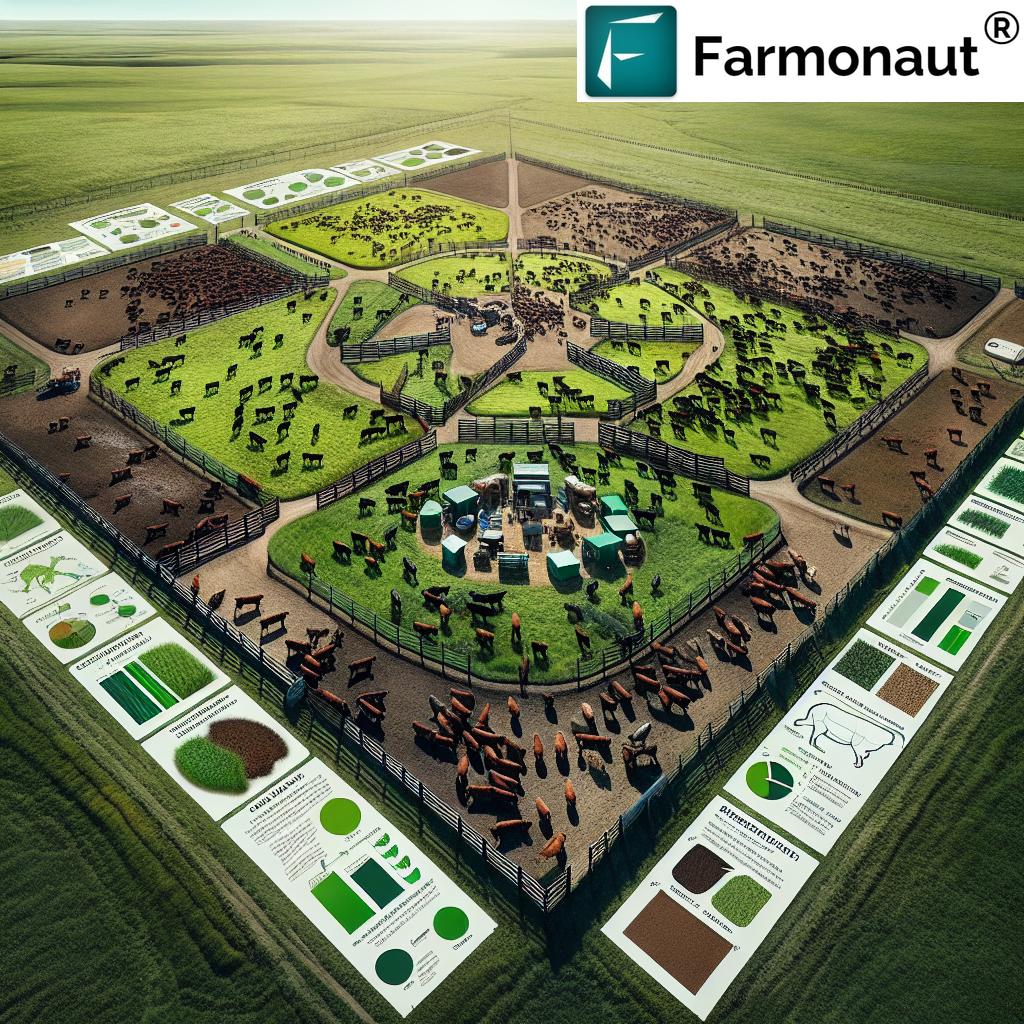
The Role of Technology in Modern Grazing Management
As we explore the world of advanced grazing systems, it’s important to highlight the role of technology in modern ranch management. At Farmonaut, we’re at the forefront of leveraging satellite technology and artificial intelligence to support precision agriculture. While our primary focus is on crop monitoring, many of the principles and technologies we employ can be adapted to support grazing management. Here are some ways technology is revolutionizing grazing practices:
- Satellite Imagery: High-resolution satellite data can provide insights into pasture conditions, helping ranchers make informed decisions about grazing rotations.
- AI-Powered Analytics: Machine learning algorithms can analyze historical data and current conditions to optimize grazing plans.
- Mobile Apps: User-friendly applications allow ranchers to track livestock movements, monitor pasture health, and manage rotations from their smartphones.
- IoT Sensors: Internet of Things (IoT) devices can monitor soil moisture, forage quality, and animal health in real-time.
- Drone Technology: Unmanned aerial vehicles (UAVs) can provide detailed aerial surveys of pastures and livestock.
By integrating these technologies into their operations, ranchers can take their rotational grazing practices to the next level, maximizing both productivity and sustainability.
For those interested in exploring how satellite technology can support their agricultural operations, we invite you to check out Farmonaut’s API and API Developer Docs. While our current focus is on crop monitoring, the principles of remote sensing and data analysis can be valuable for pasture management as well.
The Impact of Rotational Grazing on Grassland Carbon Sequestration
One of the most exciting aspects of rotational grazing is its potential to significantly increase carbon storage in grassland ecosystems. This is particularly relevant in the context of climate change mitigation efforts. Let’s explore how rotational grazing boosts carbon sequestration:
- Increased Plant Biomass: Rotational grazing encourages more robust plant growth, both above and below ground, leading to greater carbon capture.
- Enhanced Soil Organic Matter: The cycle of grazing and rest periods promotes the accumulation of organic matter in the soil, a key component of carbon storage.
- Improved Microbial Activity: Healthier soils support more diverse and active soil microbial communities, which play a crucial role in carbon cycling.
- Reduced Soil Erosion: Better ground cover prevents soil loss, preserving stored carbon that might otherwise be released into the atmosphere.
- Extended Growing Season: Properly managed grazing can extend the period of active plant growth, increasing the overall carbon capture potential.
These mechanisms work together to make rotational grazing a powerful tool for enhancing the carbon sequestration capacity of grasslands, particularly in regions like Alberta with extensive prairie ecosystems.
Comparative Analysis: Rotational Grazing vs. Continuous Grazing
To better understand the benefits of rotational grazing, let’s compare it directly with continuous grazing practices:
| Metric | Rotational Grazing | Continuous Grazing |
|---|---|---|
| Soil Health (estimated improvement) | 30-50% | 0-10% |
| Carbon Sequestration (est. tons CO2/acre/year) | 0.5-2.0 | 0.1-0.5 |
| Livestock Productivity (est. increase in weight gain) | 10-25% | Baseline |
| Grassland Biodiversity (est. species richness) | High | Moderate to Low |
| Water Retention (est. improvement in soil moisture) | 20-40% | 0-10% |
| Economic Benefits (est. increase in profit per acre) | 15-30% | Baseline |
As we can see from this comparison, rotational grazing offers significant advantages across multiple metrics, from soil health to economic benefits.
Implementing Rotational Grazing: Best Practices and Challenges
While the benefits of rotational grazing are clear, implementing this system effectively requires careful planning and management. Here are some best practices and potential challenges to consider:
Best Practices:
- Start Small: Begin with a simple rotation and gradually increase complexity as you gain experience.
- Monitor Closely: Regularly assess pasture conditions and animal performance to inform management decisions.
- Be Flexible: Adapt your grazing plan based on changing weather conditions and forage availability.
- Invest in Infrastructure: Develop reliable water sources and fencing systems to support effective rotations.
- Educate Yourself: Attend workshops, join grazing networks, and stay updated on the latest research and techniques.
Challenges:
- Initial Costs: Setting up fencing and water systems can require significant upfront investment.
- Learning Curve: Mastering the timing of rotations and understanding plant recovery rates takes time and experience.
- Labor Requirements: More frequent moving of livestock can increase labor demands.
- Adapting to Local Conditions: Each ranch has unique characteristics that require tailored management approaches.
- Balancing Multiple Objectives: Juggling productivity goals with environmental conservation can be complex.
By being aware of these challenges and following best practices, ranchers can successfully implement rotational grazing systems that benefit both their operations and the environment.
The Future of Grazing: Climate-Smart Agriculture and Ecosystem Services
As we look to the future, rotational grazing is poised to play a crucial role in climate-smart agriculture and the provision of ecosystem services. Here’s how this grazing method aligns with broader sustainability goals:
- Climate Change Mitigation: By enhancing carbon sequestration, rotational grazing contributes to greenhouse gas reduction efforts.
- Biodiversity Conservation: Improved grassland management supports diverse plant and animal communities, including at-risk species.
- Water Quality Improvement: Better soil health and reduced erosion lead to improved water quality in surrounding watersheds.
- Resilience to Extreme Weather: Healthier grasslands are better equipped to withstand droughts and floods.
- Ecosystem Service Markets: There’s growing potential for ranchers to be compensated for the environmental benefits their grazing practices provide.
As these concepts gain traction, we can expect to see increased support and incentives for ranchers who adopt climate-smart grazing practices.
Upcoming Webinars and Field Demonstrations
For those interested in learning more about rotational grazing and its implementation, there are numerous educational opportunities available. While we at Farmonaut don’t directly organize these events, we encourage our readers to seek out the following resources:
- Local Extension Services: Many agricultural extension offices offer workshops and field days focused on grazing management.
- Conservation Districts: Soil and water conservation districts often host demonstrations of sustainable grazing practices.
- Industry Associations: Beef and forage associations frequently organize educational events for producers.
- Online Webinars: Look for virtual learning opportunities from universities and agricultural organizations.
- Producer Networks: Join local grazing groups to connect with experienced practitioners and learn from their experiences.
Participating in these events can provide valuable insights and hands-on experience in implementing rotational grazing systems.
Mentorship and Training Programs
For those looking to deepen their expertise in rotational grazing, mentorship and training programs can be invaluable resources. While Farmonaut’s focus is on providing technological solutions for precision agriculture, we recognize the importance of hands-on learning in grazing management. Here are some avenues to explore for mentorship and training:
- Grazing Academies: Intensive, multi-day programs that cover all aspects of grazing management.
- Apprenticeship Programs: Opportunities to work alongside experienced graziers and learn through practice.
- Online Courses: Self-paced learning options covering grazing principles and management techniques.
- Producer-to-Producer Networks: Informal mentorship arrangements within local farming communities.
- Conservation Organization Programs: Training initiatives focused on sustainable grazing practices.
By taking advantage of these learning opportunities, ranchers can accelerate their journey towards mastering rotational grazing techniques.
Conclusion: Embracing the Rotational Grazing Revolution
As we’ve explored throughout this blog post, rotational grazing represents a powerful tool for enhancing both livestock productivity and environmental sustainability. By mimicking natural grazing patterns and leveraging advanced management techniques, ranchers can significantly improve soil health, boost carbon sequestration, and increase the resilience of grassland ecosystems.
The benefits of rotational grazing extend far beyond the individual ranch, contributing to broader efforts in climate change mitigation and biodiversity conservation. As we face growing environmental challenges, the adoption of sustainable grazing practices becomes increasingly crucial.
While the implementation of rotational grazing systems may present initial challenges, the long-term benefits for both producers and the environment are substantial. By embracing this approach, ranchers in Alberta and beyond can play a vital role in preserving and enhancing the valuable ecosystem services provided by our grasslands.
As technology continues to advance, the integration of precision agriculture tools like those offered by Farmonaut will further enhance our ability to manage grazing systems effectively. While our current focus is on crop monitoring, the principles of data-driven decision-making and remote sensing have great potential for application in pasture management as well.
We encourage all livestock producers to explore the potential of rotational grazing for their operations. By attending workshops, seeking mentorship, and staying informed about the latest research and techniques, ranchers can position themselves at the forefront of sustainable agriculture.
Together, we can work towards a future where productive livestock operations and thriving grassland ecosystems go hand in hand, ensuring the long-term health and vitality of our agricultural landscapes.
FAQ: Rotational Grazing and Grassland Management
- Q: What is the ideal duration for animals to graze in each paddock?
A: The ideal grazing duration varies depending on factors such as paddock size, forage quality, and livestock numbers. Generally, 1-3 days per paddock is recommended to prevent overgrazing and allow for adequate rest periods. - Q: How many paddocks are typically needed for an effective rotational grazing system?
A: While it can vary, many successful systems use 8-12 paddocks. This allows for sufficient rest periods between grazing events. However, some intensive systems may use 20 or more paddocks. - Q: Can rotational grazing be implemented on small acreages?
A: Yes, rotational grazing can be adapted to small acreages. Even on smaller properties, dividing pastures into multiple paddocks and rotating livestock can yield benefits for soil health and forage quality. - Q: How does rotational grazing affect wildlife in grassland ecosystems?
A: When properly managed, rotational grazing can benefit wildlife by creating diverse habitat structures. It can improve nesting conditions for ground-nesting birds and support a variety of plant species that provide food and shelter for wildlife. - Q: Are there any government programs that support the implementation of rotational grazing systems?
A: Many regions offer conservation programs or financial incentives for implementing sustainable grazing practices. Check with your local agricultural extension office or conservation district for specific programs in your area.
For those interested in exploring how technology can support sustainable agriculture practices, we invite you to check out Farmonaut’s solutions:





